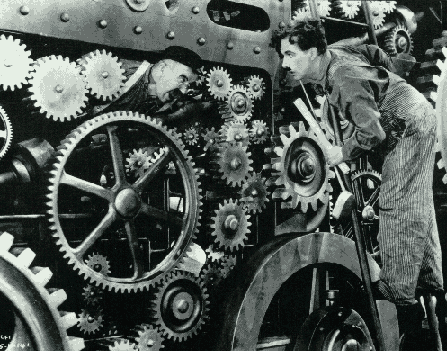ART WARS
on the Feast of St. Edgar Degas
Edgar Degas died in Paris on September 27, 1917.
 
|

|
See also today's news stories about the new permanent sculpture exhibit at the National Gallery in Washington, D. C.
ART WARS
on the Feast of St. Edgar Degas
Edgar Degas died in Paris on September 27, 1917.
 
|

|
See also today's news stories about the new permanent sculpture exhibit at the National Gallery in Washington, D. C.
ART WARS for the clueless
Someone's weblog entry for 9/27/02:
[27 Sep 2002|08:33pm]
"After a while you learn to cope with things like seeing your dead grandmother crawling up your leg with a knife in her teeth."
-Hunter S. Thompson
My comment:
 How to Handle a Thompson
How to Handle a Thompson
"What it all boiled down to really was everybody giving everybody else a hard time for no good reason whatever… You just couldn't march to your own music. Nowadays, you couldn't even hear it… It was lost, the music which each person had inside himself, and which put him in step with things as they should be."
— The Grifters, Ch. 10, 1963, by
James Myers Thompson
(born on September 27th, 1906)
"The Old Man's still an artist
with a Thompson."
— Terry in "Miller's Crossing "
Modern Times

ART WARS September 27, 2002:
From the Bulletin of the American Mathematical Society, October 2002, p. 563:
"To produce decorations for their weaving, pottery, and other objects, early artists experimented with symmetries and repeating patterns. Later the study of symmetries of patterns led to tilings, group theory, crystallography, finite geometries, and in modern times to security codes and digital picture compactifications. Early artists also explored various methods of representing existing objects and living things. These explorations led to…. [among other things] computer-generated movies (for example, Toy Story)."
— David W. Henderson, Cornell University
From an earlier log24.net note:
|
ART WARS September 12, 2002
John Frankenheimer's film "The Train" —
Und was für ein Bild des Christentums |
From Today in Science History:
Locomotion No. 1
| [On September 27] 1825, the first locomotive to haul a passenger train was operated by George Stephenson's Stockton & Darlington's line in England. The engine "Locomotion No. 1" pulled 34 wagons and 1 solitary coach…. This epic journey was the launchpad for the development of the railways…. |
From Inventors World Magazine:
Some inventions enjoyed no single moment of birth. For the steam engine or the motion-picture, the birth-process was, on close examination, a gradual series of steps. To quote Robert Stevenson: 'The Locomotive is not the invention of one man, but a nation of mechanical engineers.' George Stevenson (no relation) probably built the first decent, workable steam engines… Likewise the motion camera developed into cinema through a line of inventors including Prince, Edison and the Lumière brothers, with others fighting for patents. No consensus exists that one of these was its inventor. The first public display was achieved by the Lumière brothers in Paris.
From my log24.net note of Friday, Sept. 13th:
"Dante compares their dance and song to God’s bride on earth, the Church, when she answers the morning bells to rise from bed and 'woo with matins song her Bridegroom's love.' Some critics consider this passage the most 'spiritually erotic' of all the one hundred cantos of the Comedy."
From my log24.net note of September 12:

Everybody's doin'
a brand new dance now…
The Dark Lady
O dark dark dark. They all go into the dark….
— T. S. Eliot, Four Quartets
From a list of people who died during 1991:
| September 27 | Oona Chaplin, daughter of Eugene O'Neill/wife of Charles, dies at 66 |
"Is that the name? Well! Well! Well! That's a fine old name in the west here."
"It is so, indeed," said the landlady. "For they were kings and queens in Connaught before the Saxon came. And herself, sir, has the face of a queen, they tell me."
"They're right"….
— John Collier, "The Lady on the Grey," Fancies and Goodnights, Bantam paperback, first printing, March 1953, page 131
See also my note of Friday, September 20, 2002.
"Madame, all stories, if continued far enough, end in death, and he is no true-story teller who would keep that from you."
— Ernest Hemingway, Death in the Afternoon, Ch. 11
"Love is strong as death." — Song of Songs 8:6
("…que cantaba el rey David" — "Las Mañanitas")
"I'm not even sure he has a heart. (…) He's an American."
— Audrey Hepburn in "Love in the Afternoon"
"There is never any ending to Paris…."
— Ernest Hemingway, A Moveable Feast
Powered by WordPress